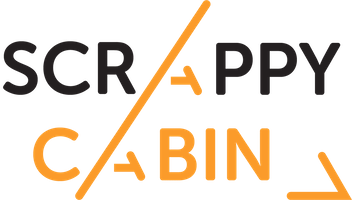UPSIDE-DOWN HOMEPAGE
The very first thing I do when someone hires me to help them grow their list is to look at 11 pages on their website.
Page #1 Their homepage
Page #2-11 Their top 10 most popular blog posts
HERE IS WHY:
On nearly every website I’ve ever seen, 70-80% of all traffic to that site goes to those 11 pages.
So, if we focus on turning those 11 pages into little list-building machines, it could make a huge difference.
That’s where the Upside-Down Homepage comes in.
Most people spend months trying to get their website to look pretty, when in reality that’s only half the equation. It needs to look pretty AND build your email list at the same time.
Over the last 2 years I’ve been trying to solve both of these problems. How can we help people overcome the massive pain of website design and give them a page that converts like crazy?
We’ve tested out 15 different page designs and worked with over 100 1-on-1 coaching clients to try to find the design that actually gets the results we’re looking for.
The results = a new homepage framework that converts like crazy and looks sexy:

It’s called the Upside-Down Homepage because the typical menu bar that you see at the top of most pages is placed at the bottom of the page. On the surface it may seem like this would annoy new visitors who want to just poke around the site.
But the opposite is true. We’ve found that this new framework decreases bounce rates by an average of 25% (the number of people who show up and leave without doing anything else) and increases email opt-ins by an average of 300%.
People spend time on your site.
More people sign up for your email list.
Win. Win.
Here are a few more examples of the Upside-Down Homepage in the wild:
Jeff Goins / Andrew Warner / Videofruit / Michael Hyatt / Elle & Company
The reason you want to use an upside-down homepage is that it will increase your conversion rate.
How can you do the same thing?
Here is a video run-through and breakdown of the 6 major sections of the Upside-Down Homepage:
There are 6 main sections to the Upside-Down Homepage.
PART 1: ABOVE THE FOLD
The top the page is dedicated to one thing: giving your readers what they want. Many websites push this call to action to the sidebar or footer. However, I’ve found that by making it the first thing someone sees when they come to your site, it increases the chances of them seeing it and acting on it.
PART 2: SOCIAL PROOF
The social proof section indicates that you are someone to be trusted, based on the sites you have been featured on and companies you have worked with.
PART 3: YOUR ROAD MAP
The road map gives your readers a quick glance at the path you are going to walk them down as they get to know you. In this part of my homepage, I cover three main topics that are important to my blog and business: building an audience, creating products and launching products.
PART 4: PILOT STORY
The pilot story is the the key to the Upside-Down Homepage. Instead of letting your best content get lost on page 10 of your blog, the pilot story highlights your best content, introduces new readers to you and your site and then gives them a call to action to learn more. (More on that in the next step).
PART 5: CALL TO ACTION
The call to action at the end of your pilot story works much like a content upgrade in a normal blog post. It takes your readers by the hands and leads them to the next thing you’d like them to do.
PART 6: NAVIGATION
This is what makes this home page "upside-down". Most websites have their navigation at the very top of the page, but we found moving it to the bottom of the page increased focus and conversions.
